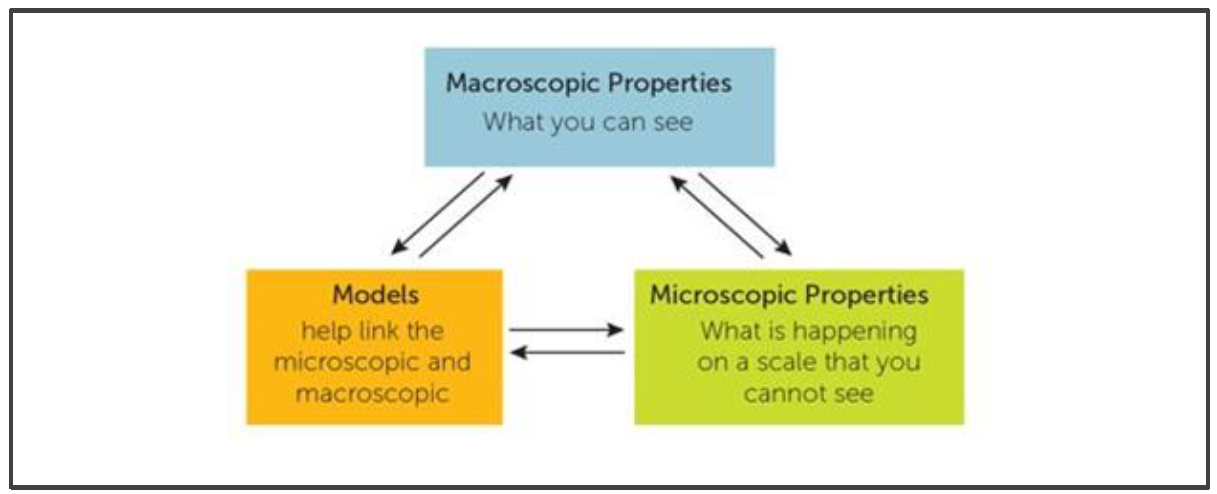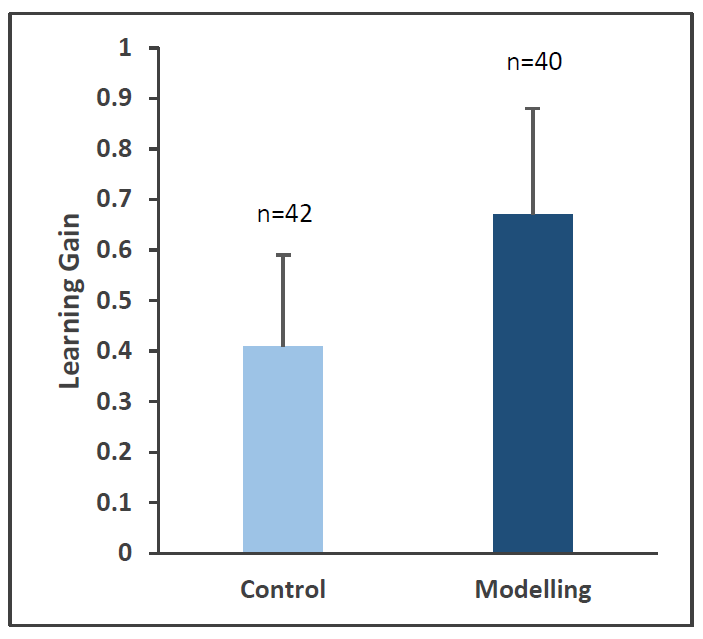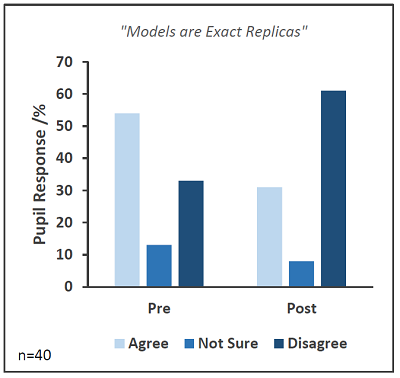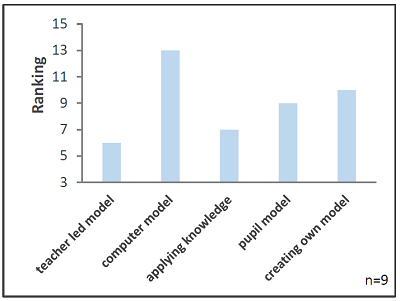Action Research into learning gains, modelling knowledge, and pupil opinion. A summary of an action research project investigating whether modelling activities improve pupils’ subject knowledge, scientific modelling knowledge, and their opinions on modelling activities. It uses pre and post test data and questionnaires, along with a focus group to investigate pupils’ understanding. An overview of research carried out for an MA dissertation submitted in May 2017.
About the Author.
Alan is a Science Teacher at AWS teaching 11-16 and specialises in Chemistry at A-level. He has led several Teaching and Learning research groups in the WHP Trust.
This article is a summary of research carried out for my Masters dissertation submitted in 2017.
Introduction
“Sir, you lied!” – This is a phrase that I have heard on a few occasions from my A-level students when I tell them about the existence of atomic sub-shells. Not wanting to be seen as an untrustworthy teacher, this made me reflect on what could have led to the students to see this addition to their understanding as a lie. It comes as a result of scientists explaining many phenomena using scientific models. In everyday language a model is considered a representation or comparison of an object. However scientific models are more complex
and also include the following key characteristics:
- Models can be multiple representations
- Models are used for prediction
- Models can explain phenomena
- Models can change over time
A lack of understanding that models can change over time helps to explain why my A-level students felt they were being lied to with the introduction of atomic sub-shells. In actual fact they failed to appreciate that at GCSE they learned about an earlier model of the atom which was developed into the more complex model at A-level. Other research supports the idea that pupils often hold very concrete views of models (Grosslight, Unger, Jay, & Smith,
1991), and therefore consider these models as “wrong” when they learn about more developed models (Gilbert, Boulter, & Rutherford, 1998). Used correctly models are thought aide pupils’ link the macroscopic properties to the microscopic properties of scientific phenomena (Warren, 2015).

This project aimed to investigate whether teaching content through a series of modelling activities improved pupils’ learning gain and improved their understanding of the nature of models. Pupil voice was
also used to identify opinions of different modelling activities. A questionnaire on the nature of modelling (based on Treagust, Chittleborough, & Mamiala, 2004) was given to pupils before and after the modelling activities, and pre and post tests were used to judge the learning gains made by the pupils. A focus group was used to inquire into pupils’ opinions of modelling activities.
Findings
Does Subject Knowledge Improve Using Modelling Activities?
 Pupils scored a mean of 9.4% on their pre topic test which increased significantly to 69% on their post topic test. The learning gain was calculated using the following equation:
Pupils scored a mean of 9.4% on their pre topic test which increased significantly to 69% on their post topic test. The learning gain was calculated using the following equation:

There was a moderate learning gain, 0.67, from the modelling activities, which is similar other research into the effects of interactive learning strategies (Hake, 1998; Yuanita, Ibrahim, & others, 2015). The modelling group had a significantly higher learning gain compared to pupils who did not learn using the modelling activities.
Does Understanding of the Nature of Models Improve?
Prior to learning through modelling activities 34% of pupils stated to know what scientific models were, this increased to 90% after the intervention. Furthermore, they were able to give more detailed and a wider range of examples of scientific models. The median score from the modelling
questionnaire increased from 35 to 40 (out of 50). Improvements in the understanding of models was seen across all key characteristics of scientific models, including pupils demonstrating that they understood how models could change over time. The smallest area of improvement was in pupils understanding that models are not exact replicas. A large proportion of pupils still held the misconception that models must be an exact copy of the real phenomena.
Which Modelling Activities do Pupils Find Most Useful?

A small focus group of pupils was asked to discuss their views on modelling activities in more detail. Working in three smaller groups, they rank ordered five different types of modelling activities from least to most useful. Using computer modelling activities came out as a clear favourite. Pupils felt that modelling activities were effective because they:
“help us understand what’s going on.”
“help us remember.”
“help consolidate learning.”
Following the focus group, a computer modelling activity was designed for the start of the next topic (using the PhET Build a Molecule animation). Using an exit ticket, 96% of pupils reported the computer modelling activity was useful or very useful in helping them understand the molecular structures. They explained the activity allowed them to visualise the structures and they were able
to distinguish between different types of bond.
Implications
This research supports previous findings that it is important to combine the process of scientific modelling with teaching of specific scientific models (Gobert et al., 2011). The learning gains made by the pupils were likely due to having a clearer understanding of the link between the macroscopic and microscopic properties of chemical processes (Chittleborough, Treagust, Mamiala, & Mocerino,
2005). However it is possible the learning gains were also due to the pupils being more engaged with the modelling activities. From the focus group it is important to give learners opportunities for pupil centred modelling activities which allow pupils to take ownership over their learning. The development of the computer modelling activity proved successful as it allowed pupils to manipulate models and compare the usefulness of different models.
Importantly this project showed an improvement pupils’ understanding of the process of developing scientific models. However it is clear that more work is needed to embed the process of modelling in the curriculum. There needs to be shift away from teaching models in isolation, towards showing how models are linked and developed from a series of scientific discoveries. After all the process of scientific modelling mirrors the process of the scientific method. So hopefully my A-level students will no longer think they were being lied to at GCSE, and they can appreciate the essential role that modelling plays in understanding the world around us.
References
Please see the attachment for all references.

